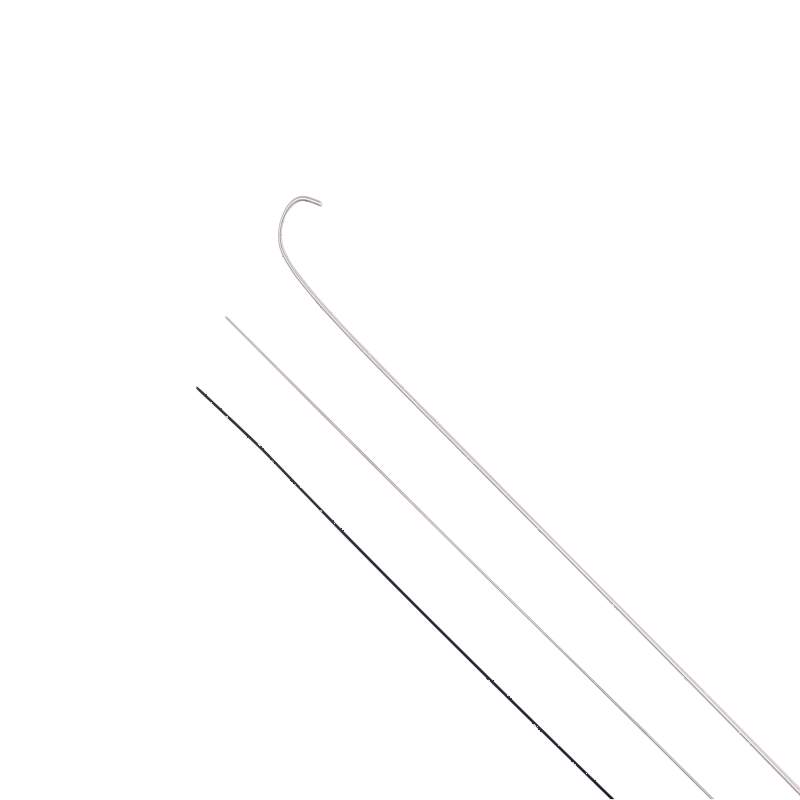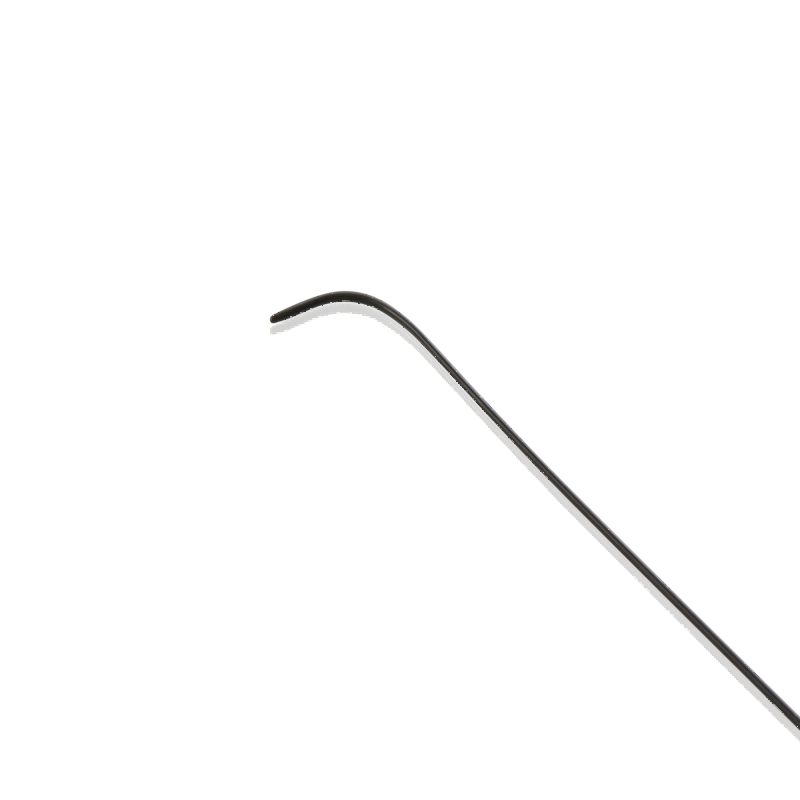PTCA Guidewire
The Demax PTCA Guidewire is a specialized medical device designed to facilitate the precise navigation of catheters and balloons during percutaneous transluminal coronary angioplasty (PTCA) procedures. Crafted with precision and utilizing high-quality materials, this guidewire offers exceptional performance, flexibility, and durability, making it an indispensable tool for interventional cardiologists performing coronary interventions.
| Structure | Specification(inch) | Effective Length(cm) | Configuration |
| Outer Layer: Stainless steel spring Inner Layer: Stainless steel core wire | 0.018″-0.038″ | 45-80cm | J-tip, Straight |
- Stainless Steel Core Wire: Provides exceptional flexibility, durability, and torqueability for precise navigation through coronary arteries.
- Hydrophilic Coating: Facilitates smooth advancement through the vasculature, reducing friction and minimizing the risk of vessel trauma.
- Soft Tip Design: Ensures minimal trauma to blood vessels during navigation, enhancing patient safety and procedural success.
- Stainless Steel Spring: Provides excellent support and retention of tip curvature, allowing for multiple straightenings without deformation.
- High Tip Curvature Retention: The guidewire offers high retention of tip curvature, allowing for multiple straightenings without deformation. This feature provides better intraoperative guidance and enhances procedural success.
- Stainless Steel Construction: The stainless steel spring and core wire provide good support, flexibility, and torqueability, ensuring optimal performance during PTCA procedures.
What is PTCA?
The Demax PTCA Guidewire is a specialized medical device used during percutaneous transluminal coronary angioplasty (PTCA) procedures. It is designed to facilitate the precise navigation of catheters and balloons within coronary arteries to treat narrowed or blocked segments and restore blood flow to the heart muscle.
- Balloon Angioplasty: Facilitates the precise navigation and placement of balloons within coronary arteries to dilate narrowed or blocked segments and restore blood flow to the heart muscle.
- Stent Placement: Aids in the accurate positioning of stents within coronary arteries to support the vessel and prevent restenosis following angioplasty.
- Atherectomy Procedures: Assists in the navigation of atherectomy devices for the removal of atherosclerotic plaque from coronary arteries.
- Thrombectomy Procedures: Facilitates the navigation of thrombectomy devices for the removal of blood clots from coronary arteries in acute coronary syndromes.
- Intravascular Imaging: Supports the precise positioning of intravascular ultrasound (IVUS) and optical coherence tomography (OCT) catheters for intravascular imaging of coronary arteries.
Related products
-
Movable-Core Guidewire
The Movable-Core Guidewire is composed of a flexible outer wire and a movable core, both typically made of materials such as stainless steel or nitinol. The outer wire provides support and flexibility for navigating through blood vessels, while the movable core allows for independent movement within the outer wire, providing precise control and maneuverability during procedures. Some wire guides may feature a hydrophilic coating to facilitate smooth advancement through the vasculature and reduce the risk of vessel trauma. Additionally, radiopaque markers on the wire guide enhance visibility under fluoroscopy, aiding in the accurate placement of catheters and other medical devices.
-
Pre-shaped Guidewire
The Pre-shaped Guidewire is a specialized medical device used in various diagnostic and interventional procedures to navigate through anatomical structures with precision. Crafted with precision and using high-quality materials, this guidewire offers exceptional flexibility, durability, and maneuverability, making it an indispensable tool for healthcare professionals performing a wide range of procedures.
-
Hydrophilic Guidewire
The composition of Hydrophilic Coated Guidewires typically consists of a core material, such as stainless steel or nitinol, surrounded by a hydrophilic polymer coating. Stainless steel provides the necessary rigidity and structural integrity to the guidewire, enabling it to withstand the forces encountered during navigation through the body. On the other hand, nitinol, a shape-memory alloy, offers flexibility and elasticity, allowing the guidewire to adapt to the contours of anatomical structures without sacrificing durability.
The hydrophilic coating, usually composed of PTFE or a similar material, serves as a lubricious layer that reduces friction and enhances the guidewire’s ability to glide smoothly through the vasculature or other bodily passages. This coating undergoes a specialized manufacturing process to ensure uniformity and durability, enabling the guidewire to maintain its hydrophilic properties throughout the duration of the procedure.
-
Angiography Guidewire
Angiography guidewires manufactured by Demax are meticulously crafted from high-grade materials such as stainless steel or nitinol. These materials offer excellent mechanical properties, including flexibility, durability, and kink resistance, essential for navigating through tortuous vessels and performing intricate vascular procedures with precision. Additionally, some guidewires feature hydrophilic coatings to enhance lubricity and minimize friction during navigation, further improving procedural success rates and patient comfort. With their advanced composition and precision engineering, Demax angiography guidewires set the standard for excellence in vascular intervention tools, empowering healthcare professionals to deliver superior care to their patients.




